#
Changelog
#
v4.1.1
/latest
Released: 2024-07-05
This version is not meant for production. It is however great for testing newer features internally.
- New IOS modelling features, offering fine-grained shaping of the base with optional text engraving.
- Improved computation of IOS landmarks (more accurate and robust).
- Improved the segmentation of the dentition on CBCT, especially on supernumerary cases and cases with impacted teeth.
- Support for uploading result files to Azure Blob Storage, by adding a mandatory header to the request.
More info about the benchmark can be found at the benchmark page
#
Segmentations
#
Algorithms
#
v4.0.0
/24.06
Released: 2024-06-28
This is the latest stable version, recommended version for production use.
NOTE: When switching from v2 to 24.06, please go through the changelog below as there are a few breaking changes. Version v2 will still be supported for a few months, allowing you to take your time to test and migrate to version 24.06.
- The per-structure (mandible, dentition, etc.) options
decimationFactorandsmoothingFactorhave been removed, and replaced bysmoothingIterationsanddecimateMaxError. This is due to the switching to new meshing algorithms which provide better meshes, more efficiently and more accurately.- The
smoothingIterationsoption controls the additional amount of smoothing to apply to the mesh. The default value of 0 for small structures (teeth, nerves, etc.) and 1 for big structures (skull, mandible, etc.) should give good and accurate results in most cases, but if more smoothness is desired, higher values can be used; we encourage you to explore what works best for you. - The
decimateMaxErroroption determines the maximum allowed error (in millimeters) when decimating the mesh. The default value of 0.03 for small structures (teeth, nerves, etc.) and 0.1 for big structures (skull, mandible, etc.) should result in a decent mesh size reduction with very minimal accuracy loss, but larger and smaller values can be used if desired. Setting this to zero will disable decimation completely (maximizing accuracy, but potentially increasing the mesh size significantly).
- The
- The makeManifold option for CBCT structures (cleaning the mesh and making it watertight) has now been removed. Almost all meshes will be manifold by default now, but if you want to be 100% sure that your meshes are manifold, you should set the
smoothingIterationsto 0. - The deprecated routes
/implant-job,/cmf-job,/orthodontics-job, and/segmentation-jobhave been removed; please use/job(equivalent to/generic-job).
- The
/generic-jobroute will be deprecated in favor of the/jobroute. Both routes have exactly the same functionality, the goal is to simplify the naming. - The
successstatus of the job has been updated; it will now only befalseonly if all output files failed. If at least one output file succeeded, the job success will be marked astrue. Note that it is still possible to check the status of each output file individually (see the section on handling job errors). /webhookJobResultswill be deprecated in favor of/pollJobResults.- The
capSizeoption underoptions.dicomis nowfalseby default. By default, DICOM files will thus be processed in their original resolution, regardless of how big they are. - The
individualRegistrationFusionoption is nowfalseby default. It makes for more accurate results. - The
externalJobIdfield in the job body is now marked as deprecated and will be completely removed in the next release. We recommend leaving this field empty and instead relying on the unique identifier generated by the Engine.
New
ios_landmarks_upperandios_landmarks_loweroutput files, returning a JSON with the automatically computed landmarks (mesial-distal points, long axis, etc.) of the intra-oral scan.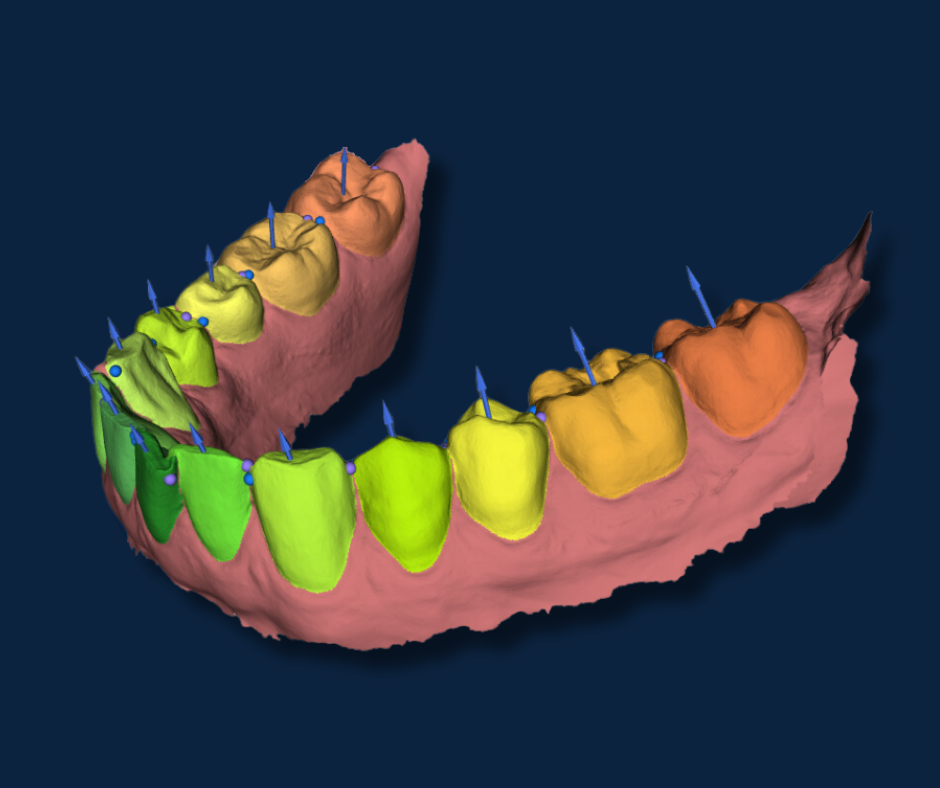
New
cleaned_ios_upperandcleaned_ios_loweroutput files, returning the intra-oral scan with an added base and with rough edges removed.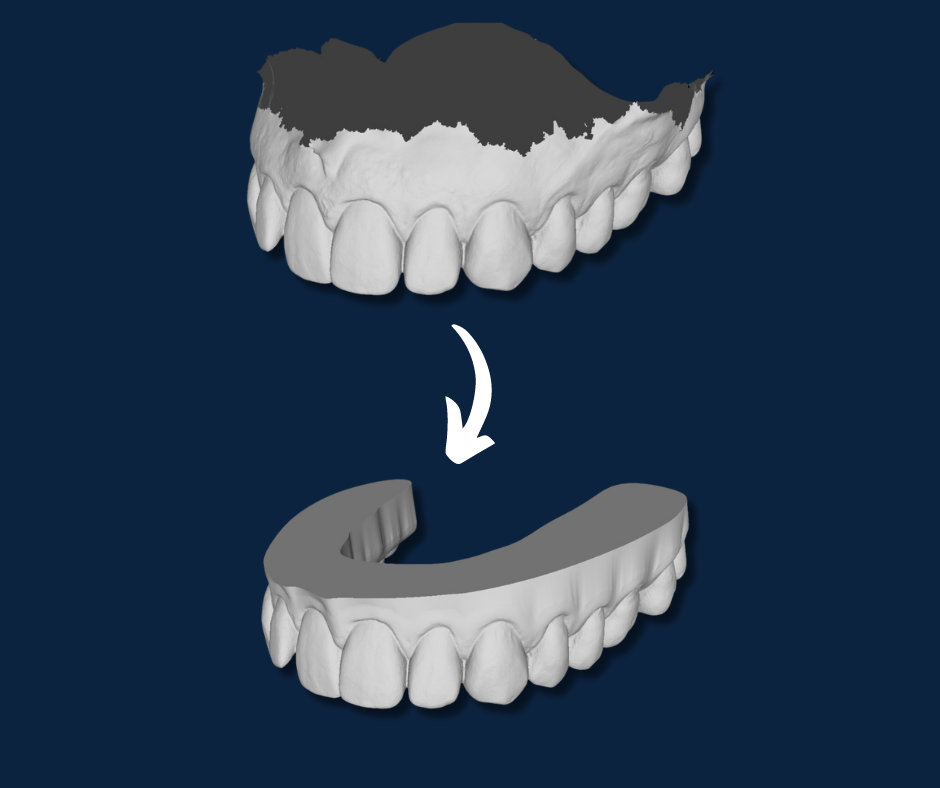
Added the option to automatically generate a gingiva with added base and/or closed emergent profile. These can be requested using
addBaseandcloseProfileunder the newly addedgingivaOptions.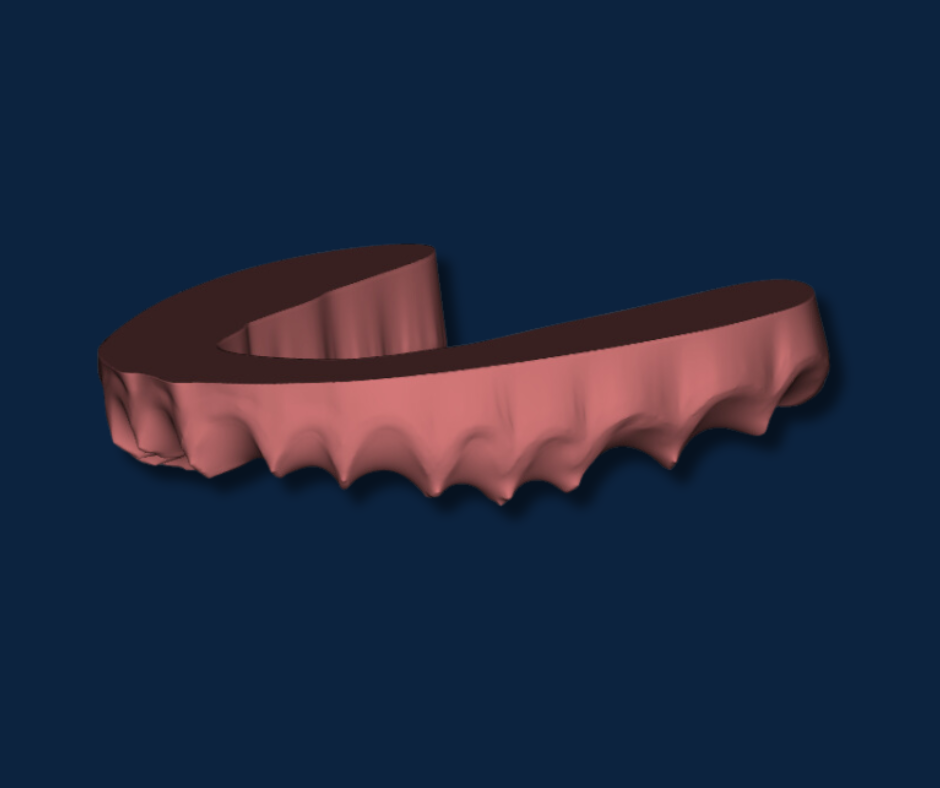
Added the outputs
ios_local_orientation_upperandios_local_orientation_lower, which allow to automatically detect the orientation of the IOS, which allows to ensure that it always faces the user.
Added new variations to the segmented gingiva meshes, which match better when displayed in combination with fused teeth or closed IOS crowns. Available through the new mesh structures:
upper_fused_teeth_gingiva,lower_fused_teeth_gingiva,upper_closed_crown_gingivaandlower_closed_crown_gingiva.Fused teeth meshes can now be decimated and smoothed.
New
keepPatientIdoption for thedicomoutput file, which will preserve the patient ID in the DICOM tags.
Greatly improved automated fusion of CBCT roots with IOS crowns. There is now a smoother transition between the IOS crown and CBCT root and better closing of the crown in the interproximal region. Moreover, the overall robustness and speed is improved.
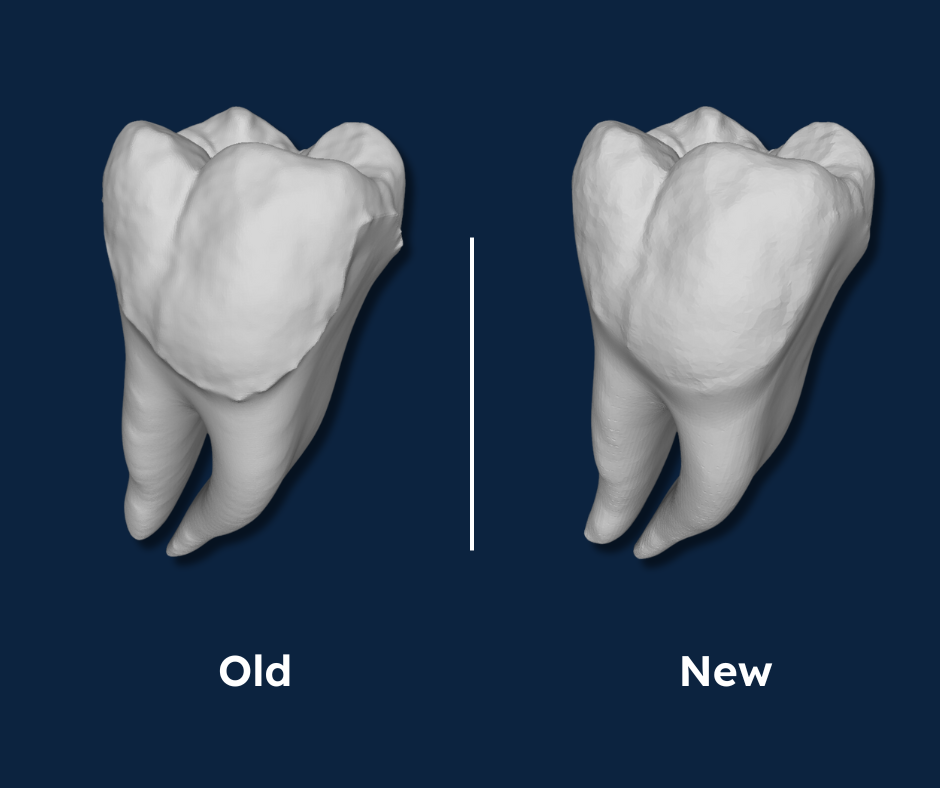
Greatly improved AI segmentation of IOS dentition. It is now faster (~1.6x speedup) with improved accuracy and robustness (less under-segmentation and better outlining of the tooth border).
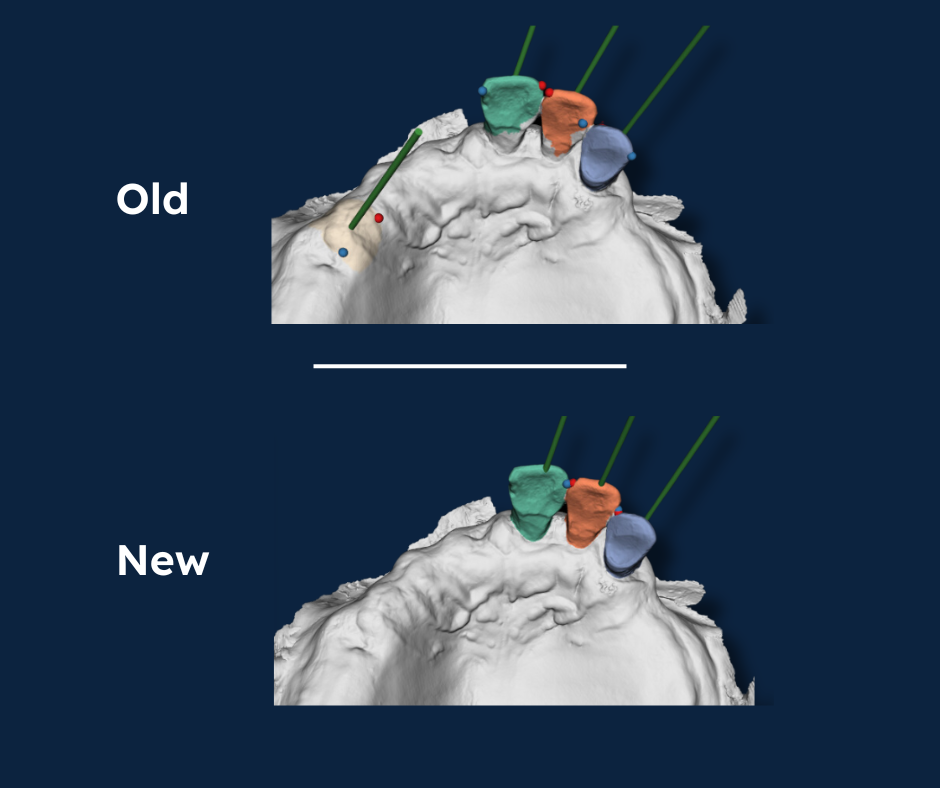
Greatly improved AI segmentation of (CB)CT dentition, especially on harder cases like the one shown below. Overall, there is a better separation of teeth in crowding scenarios, better classification and detection of teeth, and improved robustness and accuracy. Moreover, the speed got improved (~1.7x speedup).
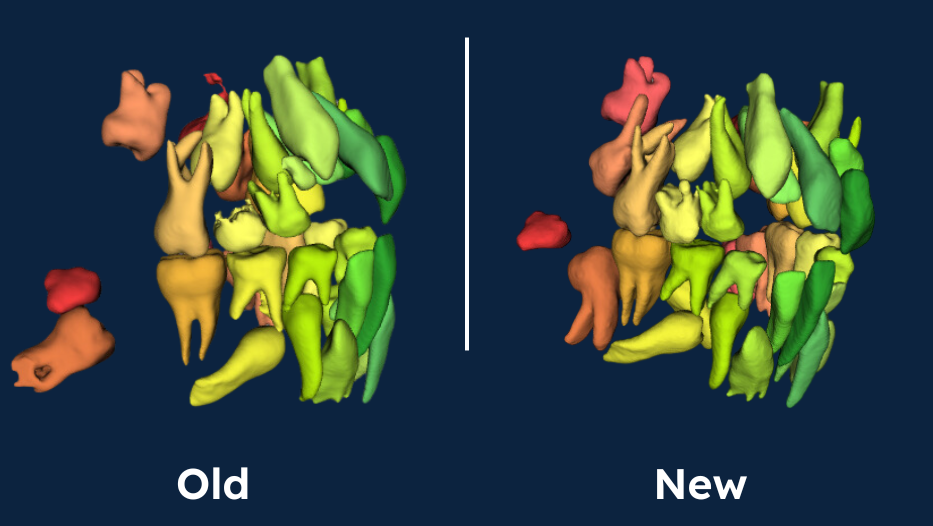
Improved automated closing of IOS crowns. It is now almost 10x faster, has a smoother transition, and is more robust.
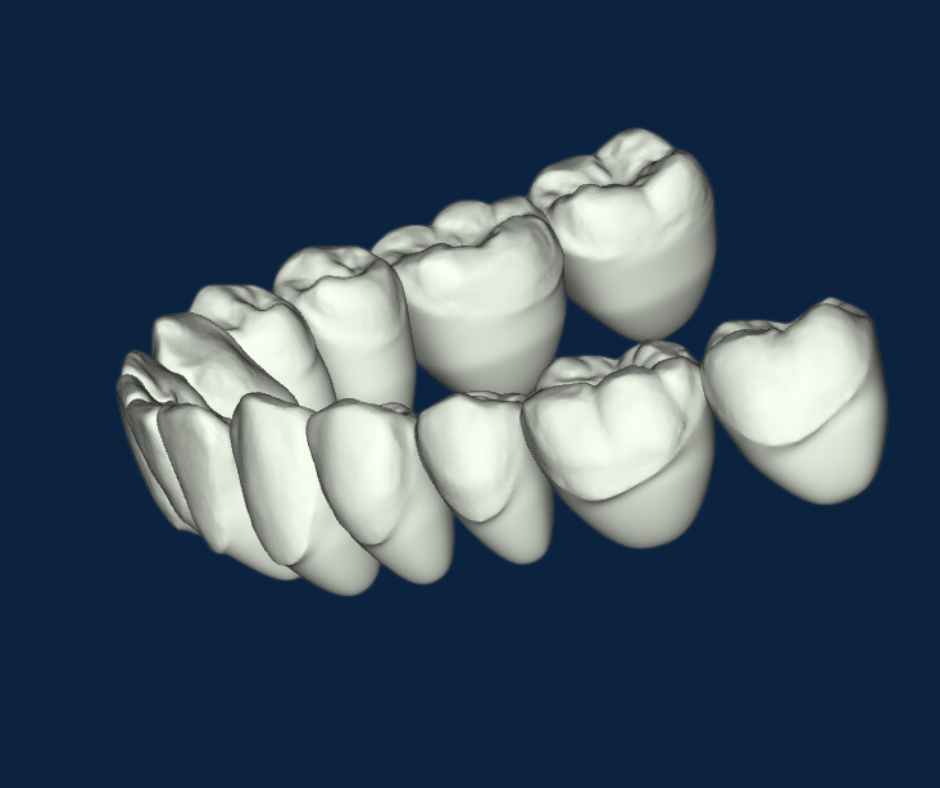
Improved AI segmentation of (CB)CT skull and mandibular canals.
Improved documentation.
- ZIP output has been made more robust, allowing it to still return partial results if one of the outputs inside the ZIP fails.
- More robust handling of sliced DICOM files with missing position and instanceNumber tags.
- More robust handling of DICOM files with empty group tags.
- More robust IOS to CBCT registration.
More info about the benchmark can be found at the benchmark page
#
Segmentations
#
Algorithms
#
v3.13.0
/v2
Released: 2024-02-23
This is the previous stable version. We recommend moving to the newer version (24.06) for the latest features and improvements. Version v2 will still be supported for a few months.
No older version to compare to, checkout version 24.06 for the latest changes available.
More info about the benchmark can be found at the benchmark page